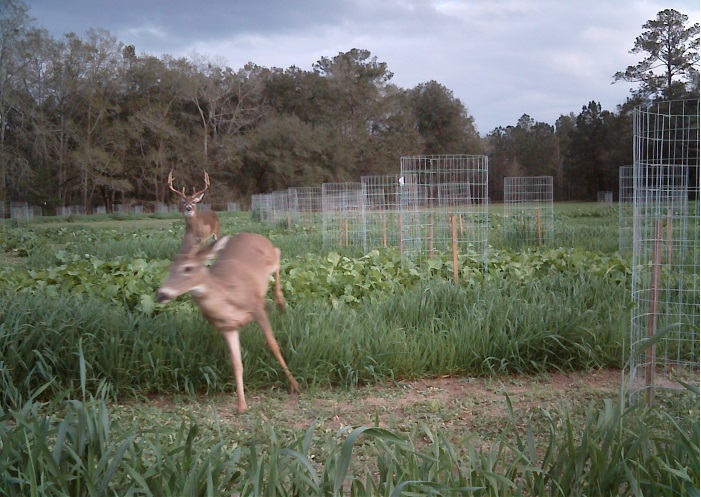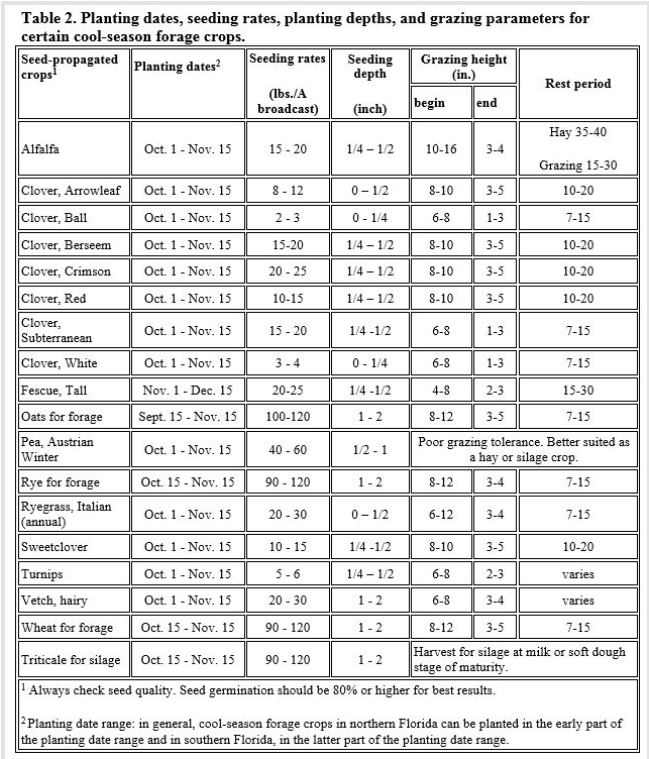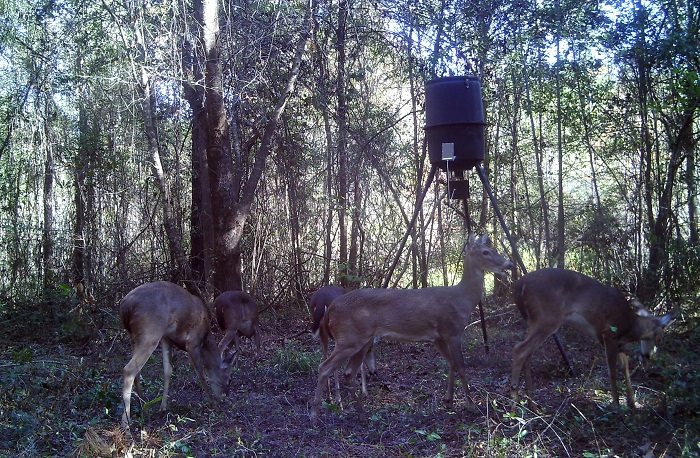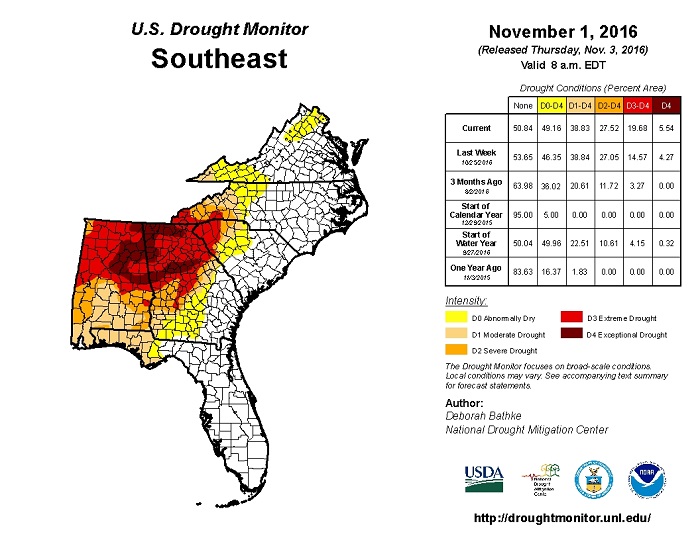
A buck chases a doe through plots of wildlife forages being evaluated in 2013 at the University of Florida’s North Florida Research and Education Center. Photo Courtesy of Holly Ober
It should be too late in the year for an article about cool season food plots; they should already be up and growing, at the very least planted. It’s November, archery season has begun, the fall food plot ship should have already sailed. However, due to the incredibly dry weather we’ve had for the past several months I hope that ship hasn’t sailed. I hope you have not planted your food plots yet. The tristate area is dry, too dry to plant anything you expect to survive. If you have not already planted, don’t until your area gets substantial rain.
The saying goes “The best time to go hunting is whenever I have time”. As the classic weekend-warrior sportsman myself, I can easily relate to that saying and I can also understand how/why folks would apply that same logic to planting food plots. Unfortunately, with this fall’s weather that logic does not hold true. Any plantings made before we have adequate moisture run a very high chance of being complete failures.
These likely failures can playout in a variety of ways but they all end the same. Seedlings have tiny roots systems, moisture must be accessible very near the soil surface in order for them to access it. If moisture is unavailable in the tiny root zone the seedlings will wilt. Wilting greatly diminishes the plants ability to carry out photosynthesis; no photosynthesis no energy. Seedlings have virtually no stored energy to fall back on, so the seedlings begin to die rapidly.
Admittedly, I left out one key detail in the plant horror story above; moisture is required for seed germination. If it is dry enough seeds can be planted and nothing will happen – they won’t germinate, they won’t try to grow, they won’t die from lack of moisture. This fact leads some to conclude, “Plant now and it will come up whenever it rains”. While there is some sound logic in that conclusion, it is a very risky plan when you consider the types of plants we typically include in our wildlife plots. “Dusting in” as it is called in the crop world, can work with larger seeded, deeper planted crops. It is not well suited to small seeded, very shallow planted forages like clover. When a seed is right at the soil surface the tiniest amount of rain or even a heavy dew could provide enough moisture for germination which would likely start the process I described earlier.
The safest bet is to wait until your area has received a good soaking rain and there is a favorable chance for additional rains. As dry as we are now, that first ½ inch shower will not provide adequate moisture for establishment if it is followed by an extended period without additional rain.

Many of the commonly planted cool season forages have very small seeds and should be planted very shallow, making them especially susceptible to drought conditions.
From 2015 Cool-Season Forage Variety Recommendations for Florida
Sooner or later it will rain (I think), so you wind up planting your plots later than normal. What does that mean? In the grand scheme of things, not much. As we get later in the year the days get shorter and the air and soil temperatures get lower which can slow the development of the plants. That said, the real growth for most of our cool season forages really occurs in the spring and that will still be that case regardless of if you planted in October, November or December. Remember the goal of food plots should be increasing the quality and quantity of forage available for wildlife throughout the entire year.
The dry weather has messed up food plot establishment as it relates to hunting season but if all you wanted was a game attractant for hunting purposes food plots were probably not your best bet in the first place. It takes considerable time, effort and expense to maintain quality food plots, to the point that they are really not a very practical option if only viewed as an attractant for a few months out of the year.

If attracting deer, not improving habitat, is your primary goal you might consider establishing a feeding station. Be sure to check FWC regulations before you begin feeding game animals.
Be patient, wait for the weather conditions to improve before planting. There is no point in wasting your time and money on plantings that have a very low chance of being successful. Contact your county’s agriculture or natural resources agent for more details relating to the establishment of wildlife plots.
- Fall is an Excellent Time to Manage Vegetation - October 21, 2025
- Believe It or Not, It’s Time to Start Working on Cool-Season Food Plots - August 4, 2025
- Fall is Here, It’s Time to Spray Cogongrass - October 11, 2024

